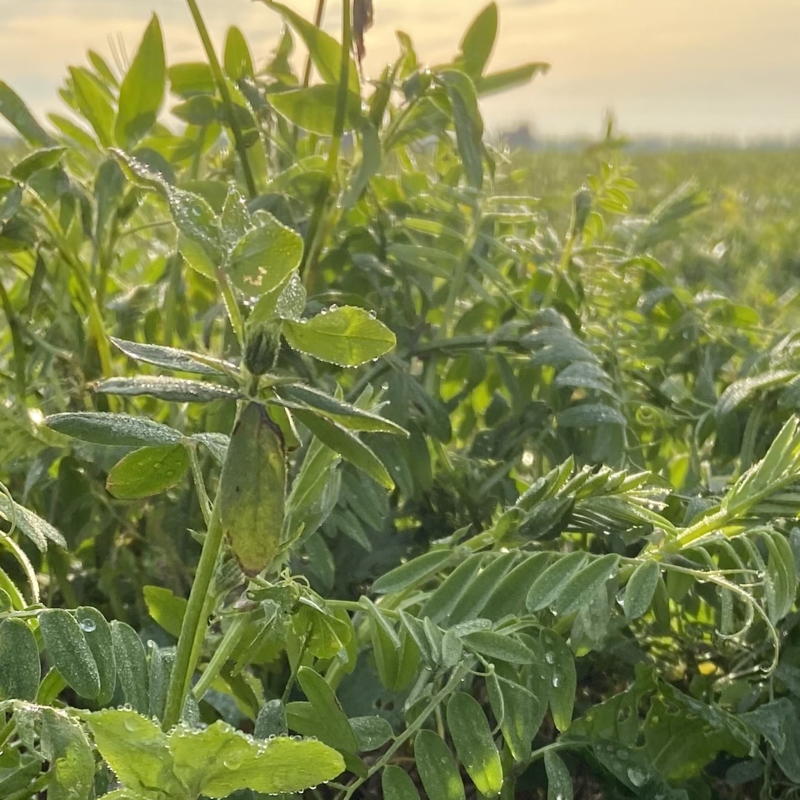Click here for delivery information and charges.
NUM3 1 Year Annual Rotational Legume Fallow (CSS6/A)
Use this mix for NUM3 Sustainable Farming Incentive (SFI) - Legume Fallow (Rotational), to establish a mix of vigorous legumes to flower for the summer months of May-August.
- Can be sown on a different parcel of land each of the three years of the agreement
- Provides valuable food source for beneficial insects and farmland birds
- Adds nutrients into the soil and improves soil health and structure
- Suitable for Sustainable Farming Incentive (SFI): NUM3, NUM2
- Contains: 50% Vetch, 15% Linseed, 15% Buckwheat, 7.5% Crimson Clover, 7.5% Berseem Clover, 5% Phacelia
- Sowing rate: 15-20kg/ha. Pack size: 20kg
Click here for delivery information and charges.
Mixture Specification
50% Vetch
15% Linseed
15% Buckwheat
7.5% Crimson Clover
7.5% Berseem Clover
5% Phacelia
Sowing & Establishment
SUSTAINABLE FARMING INCENTIVE (SFI) NUM3 - LEGUME FALLOW
What To Sow
Establish a seed mix that contains at least 6 flowering species, including legumes that will flower from May through to August. The seed mix can also contain non-legume flowering species or grasses to control blackgrass.
Where To Sow
Sow on sites that receive plenty of sunlight, where you wish to improve grass weeds such as blackgrass and to help improve soil health and compaction.
Avoid sites that support hard-to-control weeds such as docks, ragwort and thistle,
How to Sow
For germination, the seed will need a firm, level, weed-free seedbed. It must be sown when the soil is warm and moist which is typically in the Spring or Autumn. It is easier to control grass weeds in the Spring.
You can either broadcast or shallow-drill the seeds to a depth of 1cm maximum. Once the seeds have been sown, you can roll the seeds to aid seed-to-soil contact providing the soil is dry enough.
Information in this article is given in good faith but should not be seen as a substitute for complete guidance issued at https://www.gov.uk/government/collections/sustainable-farming-incentive-guidance. Don’t hesitate to get in touch for further information.
Maintenance
SUSTAINABLE FARMING INCENTIVE (SFI) NUM3 - LEGUME FALLOW
Maintenance during establishment
A few months after sowing, checking on the area to monitor germination and pest damage is advisable. You may need to re-seed the area if germination levels are low
Maintaining established areas
You will need to maintain the sward in a way that can achieve the action's aims.
NUM3 guidance allows you to cut the area if blackgrass and other annual grass weeds are turning to seed. Within the first Soring and Summer after sowing the mix, you can:
- cut the area as soon as blackgrass starts to produce seed heads
- do follow up cuts as necessary to remove any other grass weed seed heads
During the second year after sowing, you can cut the area between March and mid-June to control blackgrass. You must then leave the area uncut for at least 5 weeks until early August. Remove the cuttings where possible so as to not limit light and space for new seedlings, if it is impractical to do this, then you can finely cop them and spread thinly.
If you seed signs of nesting birds before cutting, delay cutting until the birds fledge. Once yp
Records and Evidence
You should keep evidence to show what ypu've done to complete this action's aims. This evidence could include photographs and other documentation including field operations at a land parcel level and invoices.
Information in this article is given in good faith but should not be seen as a substitute for complete guidance issued at https://www.gov.uk/government/collections/sustainable-farming-incentive-guidance. Don’t hesitate to get in touch for further information.
